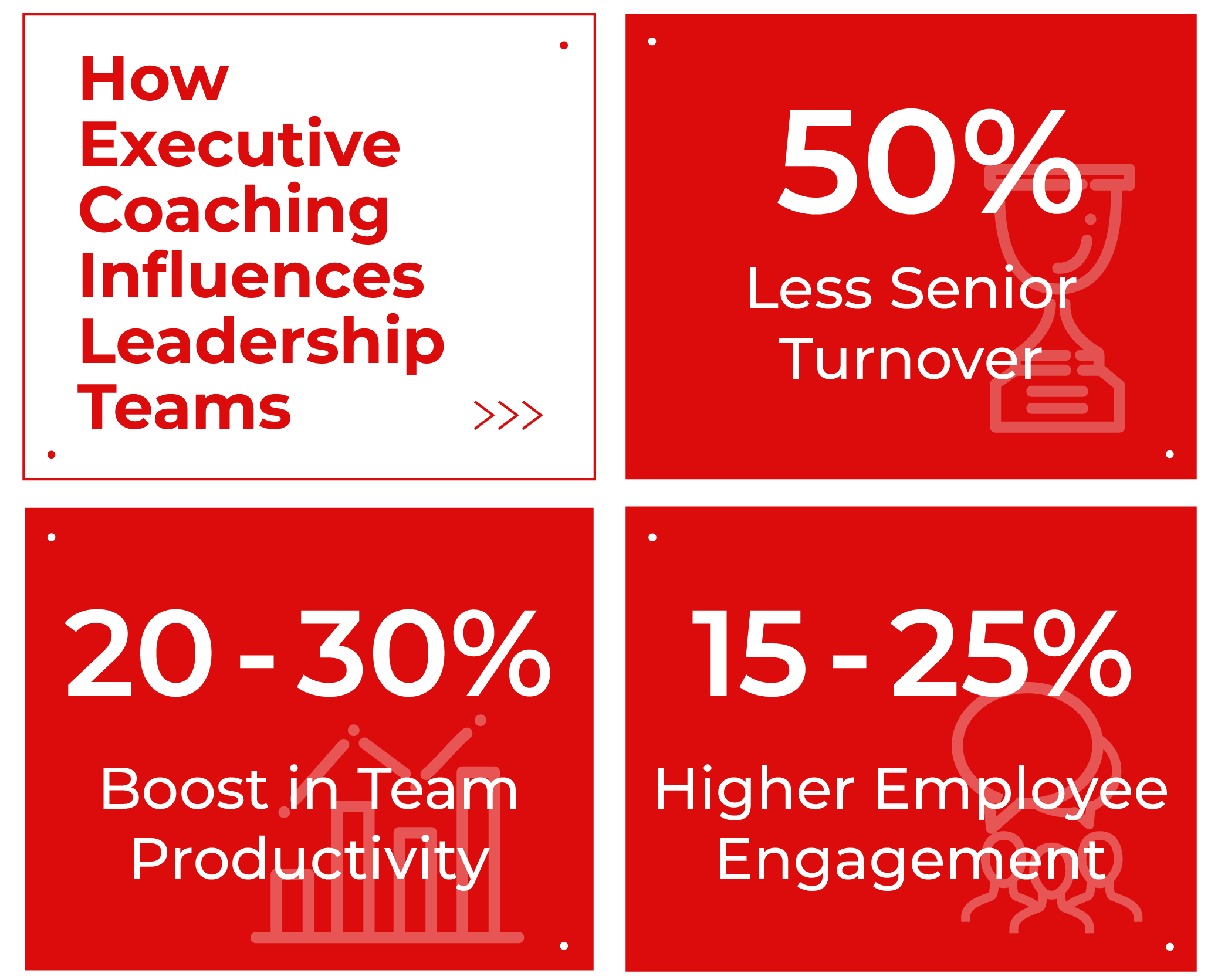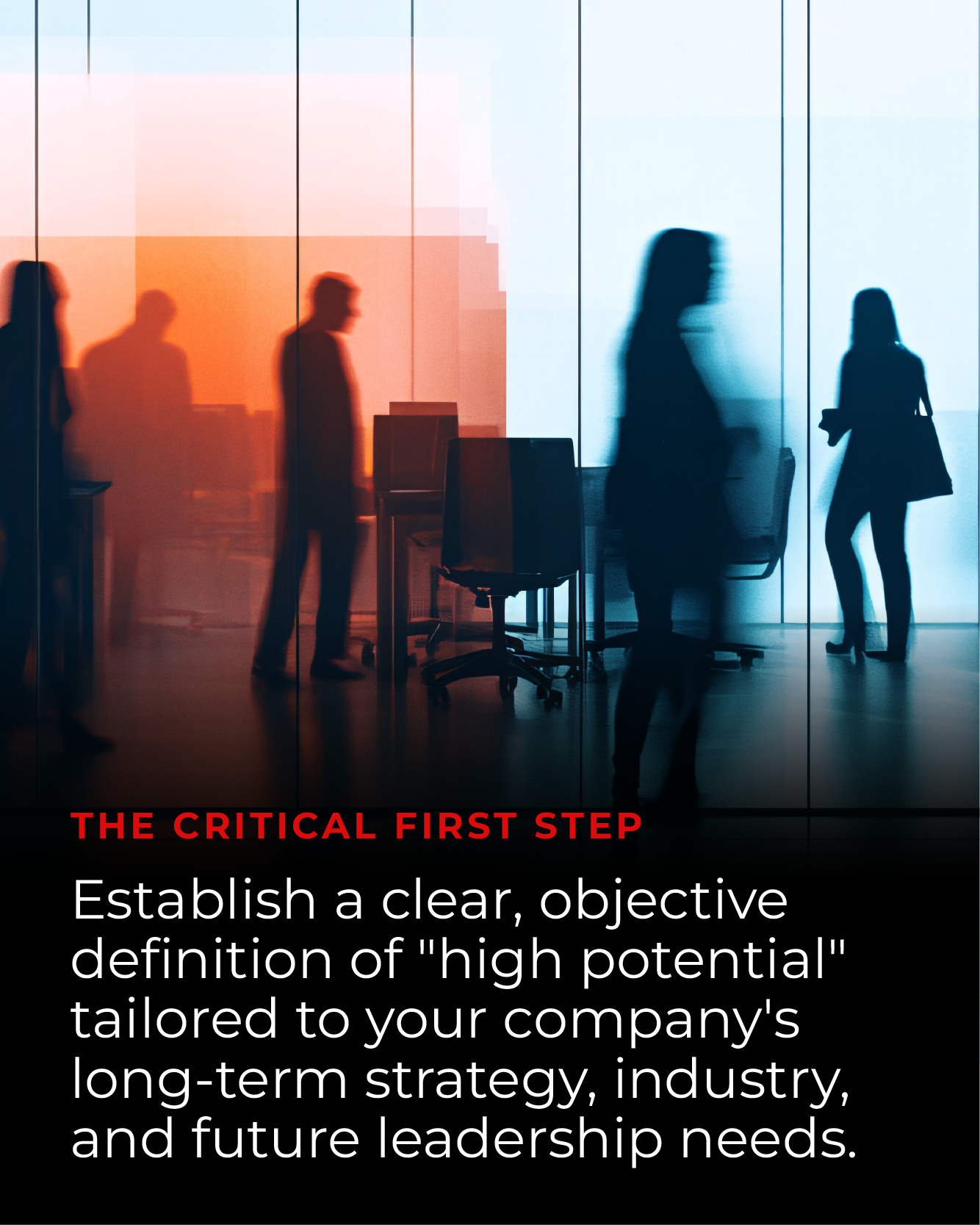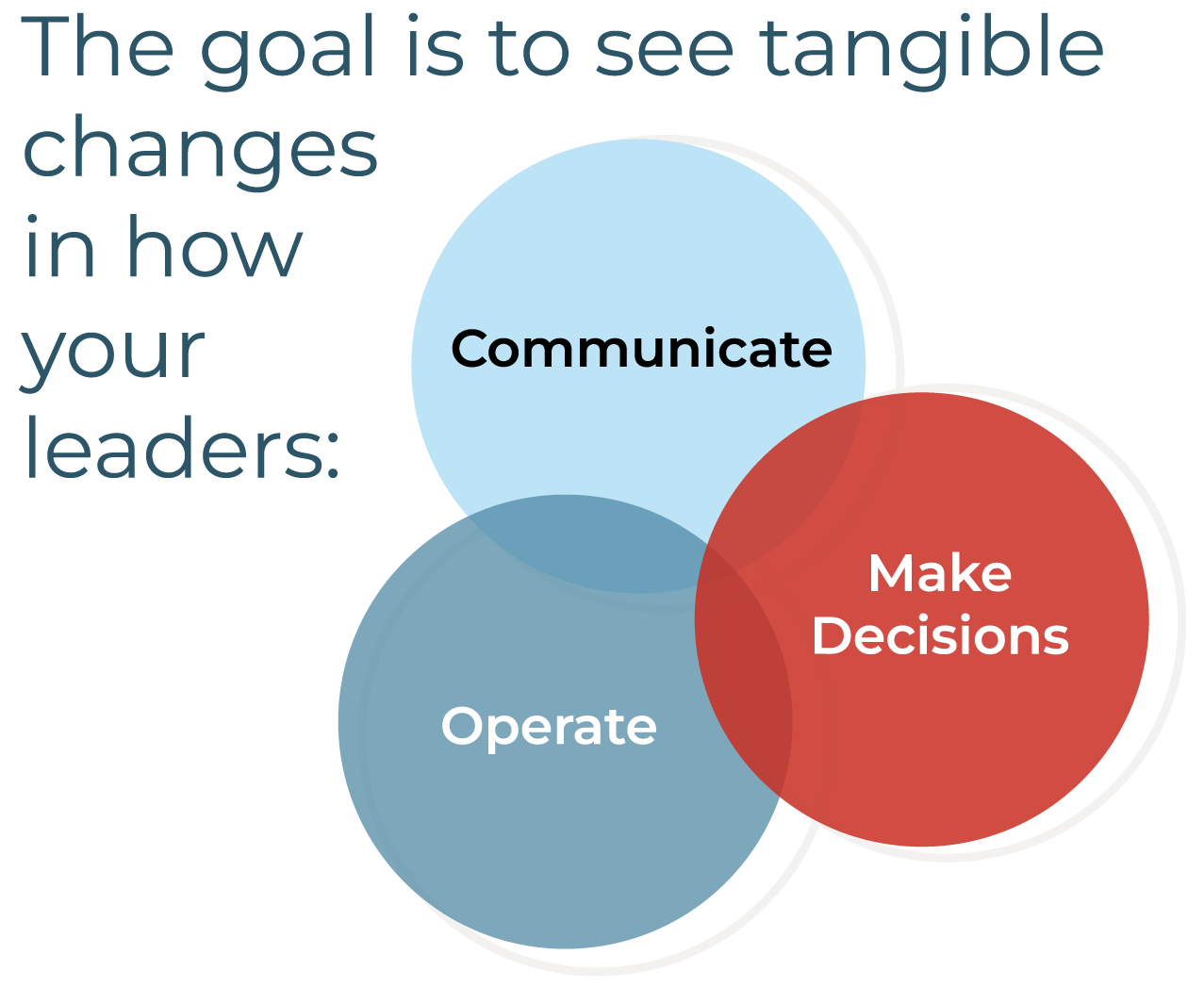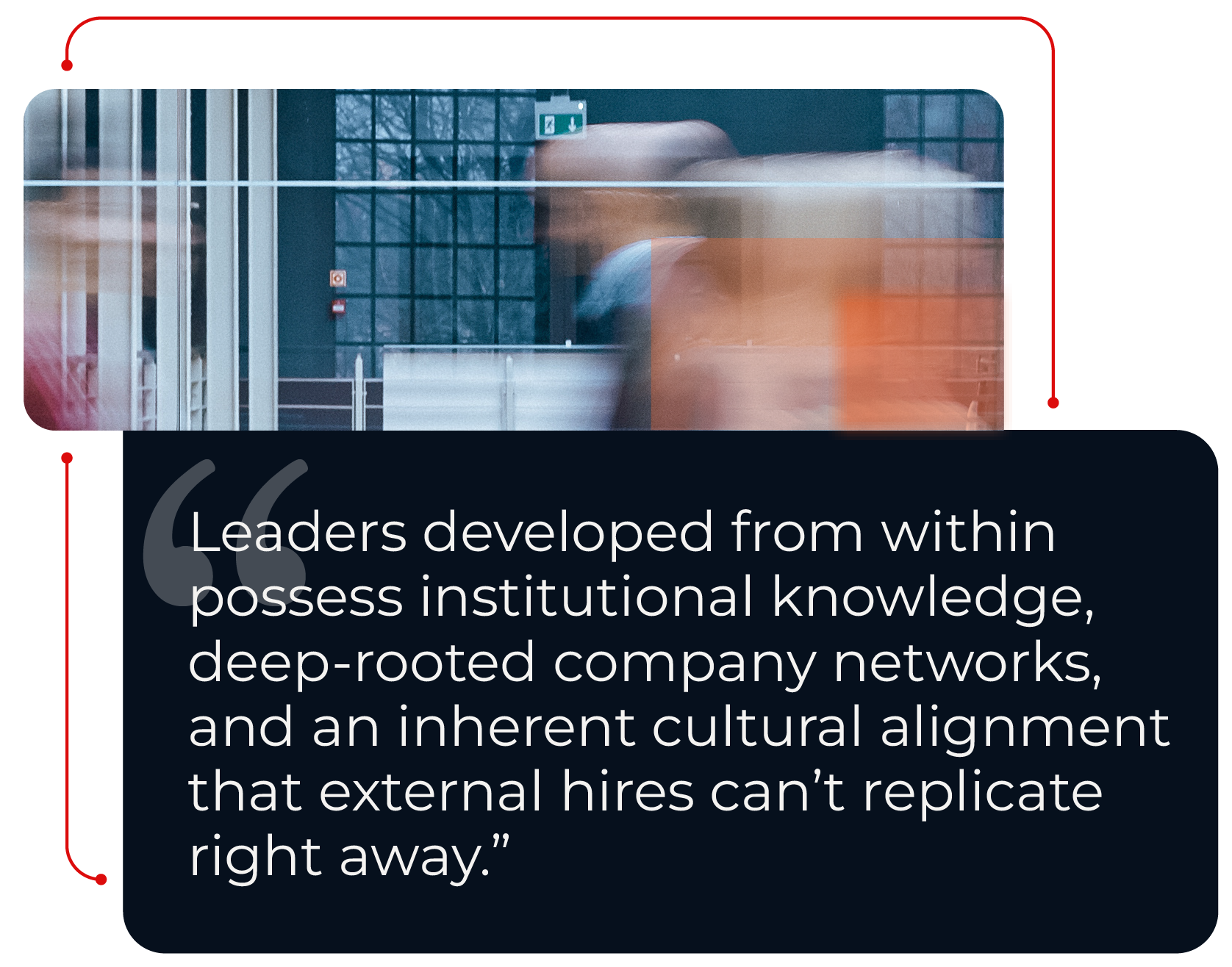A guide to building future-ready leaders from within.
WRITTEN BY

Joe Riggione
co-CEO & Founder, True
Balancing long-term profitability with fast-paced growth needs a strong pipeline of executive talent. In my last article, I talked about how to spot hidden leadership potential: finding individuals who are quietly leading, influencing, and learning faster than others, but may not be actively raising their hands at opportunities.
Identifying potential is only the beginning. The real challenge—and possibilities—lies in how you turn that potential into ready leadership. According to organizational theorist Richard Boyatzis, executive coaching significantly enhances leadership teams, resulting in over 50% less senior leader turnover, a 20-30% boost in team productivity, and 15-25% higher employee engagement1. It’s about making leadership development intentional, aligning it with your business strategy, and turning succession planning into a proactive strength instead of an afterthought.

In this article, I share how, at True, we have created a structured, data-backed approach to developing a talent pipeline so we’re not reacting when key roles open up—we’re ready.
Step 1: Define your goal and who can take you there

Not every strong performer is a high-potential individual, and often, the true HiPos aren’t immediately obvious. The critical first step is to establish a clear, objective definition of “high potential” tailored to your company’s long-term strategy, industry, and future leadership needs. Subjective observations like “they’re good with people” or “they always hit their numbers” don’t really work. We need to define the specific behaviors, cognitive capabilities, strategic thinking, and emotional intelligence required for your next CEO, CFO, or CPO.
At True, we look beyond current performance and focus on future-oriented indicators, the same as we do for external candidates. For example:
- Learning agility
How quickly an executive adapts to change, absorbs new information, and adjusts based on feedback. - Influence
Do others naturally look to them for leadership and insight? - Strategic thinking
Their ability to connect daily work to the broader business objectives. - Resilience
How they respond to pressure, setbacks, or ambiguity. - Drive and curiosity
Are they actively seeking growth, taking initiative, and consistently pushing their own boundaries?
Aligning your HiPo definition with your business goals ensures you’re not just developing leaders, but the right leaders for your company’s future.
Step 2: Go beyond performance—use data to uncover potential
Using a data-first approach helps you truly differentiate your talent and avoids decisions that rely too heavily on recent performance. A combination of assessments—behavioral, cognitive, and motivational—paired with performance reviews, will reveal traits like adaptability, influence, and the ability to lead complex, cross-functional initiatives. These insights can directly inform internal mobility, strategic project assignments, and placement in specialized leadership development programs. This is how you make smart talent decisions. For a refresher on what these assessments are, see my previous post.

Step 3: Tailor development to the individual, not the org chart
Once you’ve identified your high-potential individuals and mapped their strengths and growth areas, the next step is to craft personalized, impactful development paths—and avoid generic leadership training programs.
For example, if an assessment pinpoints a need for enhanced strategic thinking, give them projects that demand long-term planning and external market analysis. If influencing skills need to improve, provide direct, targeted coaching or mentorship. This isn’t about checking a box—it’s about deliberate practice and experiential learning. Here’s how we map leadership development to the individual and the firm’s critical needs:
Stretch assignments: Place HiPos on projects directly tied to strategic business priorities. These opportunities must push them beyond their comfort zone, involve complexity and ambiguity, demand cross-functional collaboration, and carry visible accountability. Like launching a new product, leading a new market initiative, or driving significant change in a legacy process.
Structured mentorship: Pair HiPos with seasoned leaders who can truly guide them. Define specific goals, ensure regular meetings, and align discussions with the development themes revealed in their assessments.
Targeted coaching: Continuously focus on tangible behavior change—like influencing stakeholders or leading effectively through ambiguity—and track that change over time.
Curated leadership programs: Design programs that address actual company needs, such as strategic thinking, emotional intelligence, or change management. Use assessment data to group HiPos by specific development needs, then design learning paths accordingly.

Step 4: Track the actual behavior change
Too often, leadership development becomes a one-way push. We put people through programs and cross our fingers that something sticks. But without measuring progress, you can’t know what’s really shifting.
Implement robust feedback loops, including 360-degree evaluations, regular manager check-ins, and peer reviews, then adjust development plans based on what’s working and, more importantly, what’s not. The goal is to see tangible changes in how your leaders operate, communicate, and make decisions. This is how you ensure your investment is paying off.

Step 5: Connect your talent to your future org chart
Objective assessment data transforms succession planning from a reactive scramble into a proactive, forward-facing exercise. It allows you to strategically map internal talent rather than relying on gut instinct or tenure.
Use this information to:
- Identify 2-3 potential successors for every key executive role.
- Understand their readiness level, specific development needs, and potential career paths within the company.
- Assign projects and experiences that directly close the gap between where they stand today and the future role.
- Regularly review and revise your succession plan based on real progress.
This strategic mapping ensures leadership continuity, directly impacts organizational resilience, and drives future success.
Closing Thoughts
Leaders developed from within possess institutional knowledge, deep-rooted company networks, and an inherent cultural alignment that external hires can’t replicate right away. It’s a long-term investment, but one I have consistently seen produce significant returns. It’s also far more cost-effective than reactively searching for the “perfect” external candidate when a senior role opens up.

This comprehensive, data-driven approach doesn’t just strengthen your executive suite—it creates a culture of continuous improvement across your organization. At True, we help our clients curate high-performing executive teams through Talent Advisory, our suite of tech and data-forward tools for assessments, onboarding, coaching, succession planning, and broader talent strategies. Reach out to your True talent partner to discover how to de-risk every talent decision and build a truly agile organization.
1. Boyatzis, R. E., & McKee, A. (2005), Resonant Leadership: Renewing Yourself and Connecting with Others Through Mindfulness, Hope, and Compassion, Harvard Business School Press
For media inquiries, contact Jillian Ruggieri